
views
- Use a food thermometer to make sure the interior temperature of a shrimp is at least 145 °F (63 °C). This is the safest way to tell if it’s fully cooked.
- Check for an opaque white color on the outside, a curved “C” shape, and a tender texture. When in doubt, cut one open to see if it’s cooked through.
- Ensure all your shrimp finish at the same time by spreading them evenly over a pan or tray and adding them to the heat at the same time.
Measure the internal temperature.
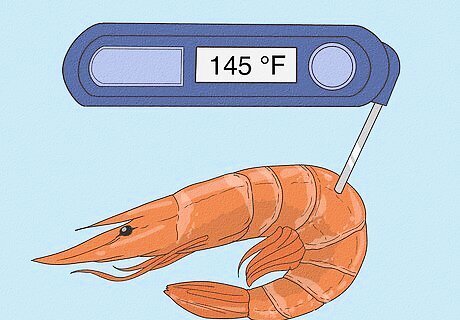
Use a food thermometer to make sure the shrimp is 145 °F (63 °C). Stick the stem of the thermometer into the center of the thickest part of a shrimp and wait 5-15 seconds for the temperature to read accurately. This is the safest and most accurate way to tell if a shrimp is cooked hot enough to kill bacteria. Test your thermometer for accuracy by placing it in freezing or boiling water. It should read 32 °F (0 °C) or 212 °F (100 °C), respectively. According to the FDA, 145 °F (63 °C) is the minimum safe temperature for almost all fish and seafood.
Look at the external color.
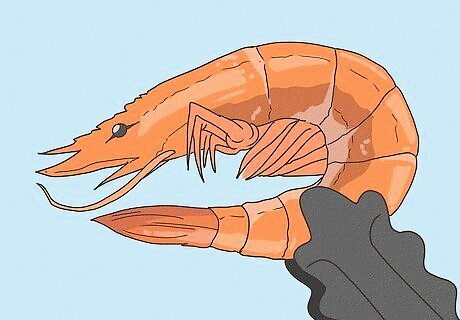
Check the shrimp for an opaque white color with pops of pink or orange. Examine both sides of the shrimp and the deveined ridge near the head. You may need to grab a pair of tongs or a spatula to flip them over. The white should be pearlescent—if the shrimp looks matte white or dull, it may be overcooked. This is the easiest way to tell if a shrimp is cooked since raw shrimp are generally gray and translucent.
Examine the shrimp’s shape.
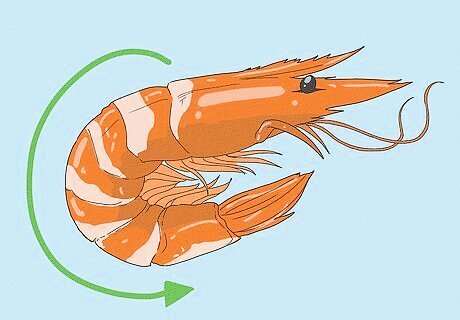
Look for a relaxed, curved “C” shape. Raw shrimp is fairly straight and begins to curve inward and shrink as it cooks. When the shrimp is fully bent into a “C” or an oval (not just a shallow “U” shape), take it off the heat and enjoy. If it’s left too long, you’ll end up with an overcooked “O” shape. Small shrimp may look like an “O” or a circle even when they’re perfectly cooked due to their size.
Feel the shrimp’s texture.
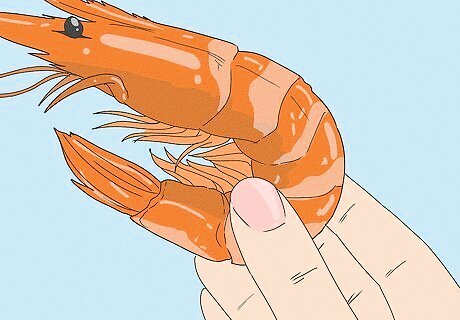
Press the shrimp with a fork or your finger to see if it's tender. Raw or undercooked shrimp feels springy, bouncy, or slimy while overcooked shrimp feels tough or rubbery. Perfectly cooked shrimp falls right in between—when you feel a soft and tender texture, take them off the heat.
Look at the interior color of a shrimp.
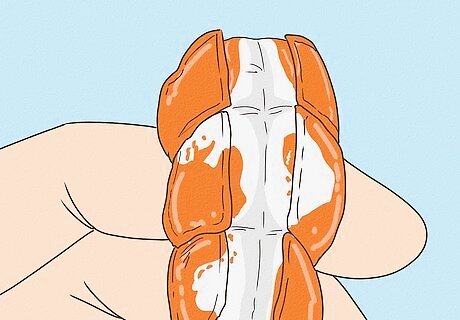
Cut open the thickest part of a shrimp and check for a white color. If it’s at all gray or translucent, it isn’t finished—put it back on the heat. Work quickly since the other shrimp will continue cooking (and they cook fast!). Chances are you only need another minute at most. The interior should be the same white-ish color as the outside and totally opaque.
Check shrimp at the end of their cooking time.
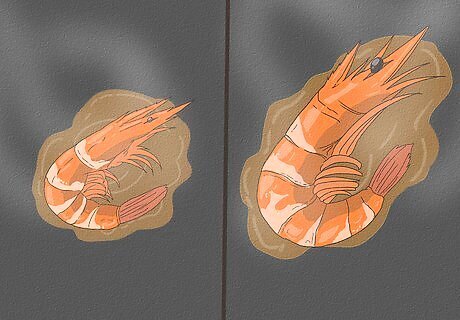
Stay close to your shrimp—they’re done cooking after only 2-5 minutes. Check your shrimp’s color, shape, texture, or temperature after about 3 minutes in most cases. The exact cooking time for thawed shrimp depends on the cooking method, plus the amount and size of the shrimp: Boiling: Small shrimp will be done in as little as 2-3 minutes and jumbo shrimp can take up to 8 minutes. Poaching: Large shrimp takes about 10 minutes. Check for opaqueness and firmness every few minutes, regardless of size. Sautéing or baking: Depending on the size and number of shrimp, they’ll take about 4 or 5 minutes (1-2 minutes per side). Grilling: Over medium-high heat, shrimp will be done in 3-4 minutes (1-2 minutes per side of a skewer). Steaming: Large shrimp will be cooked through after about 5-6 minutes.
Cook like-sized shrimp together.
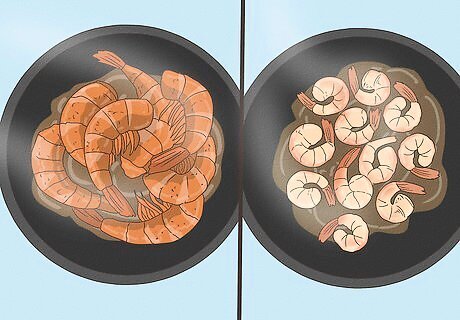
Match jumbo with jumbo or small with small so they finish together. The larger a shrimp is, the longer it takes to cook thoroughly. Make sure to cook the same size of shrimp per batch for the best, most even results. For example: Small boiled shrimp are done after 3 minutes, while jumbos take 7-8 minutes. If you boil them together, you’d need to fish out the small ones early.
Spread shrimp evenly across pans and trays.
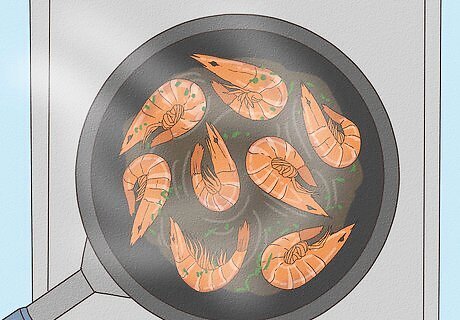
Lay all shrimp in a single layer with space in between for even cooking. Check to make sure that no shrimp are touching or on top of each other, since this will increase their cook time compared to the other shrimp. An even layer ensures they will all be cooked through at the same time. If you’re steaming shrimp, lightly toss them halfway through their cooking time (about 3 minutes in) to make sure they’re cooking evenly.
Add all shrimp to the heat at the same time.
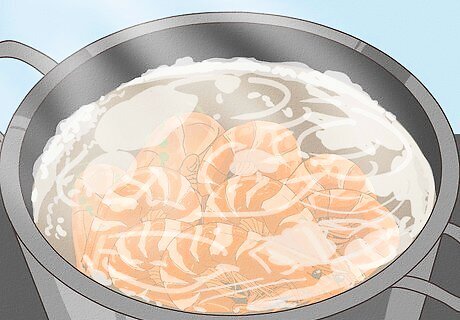
Start cooking all of your shrimp together due to their short cook time. Move fast if you’re cooking a large amount so the first shrimps you throw onto the pan or grill don’t finish significantly faster than the next handful. Once they’re on the heat, make sure they cook for the same amount of time on both sides at the same temperature.














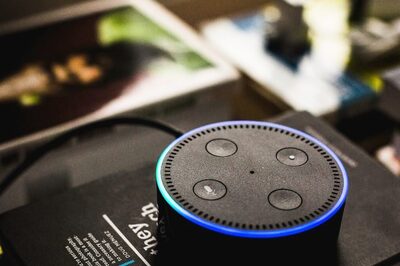





Comments
0 comment